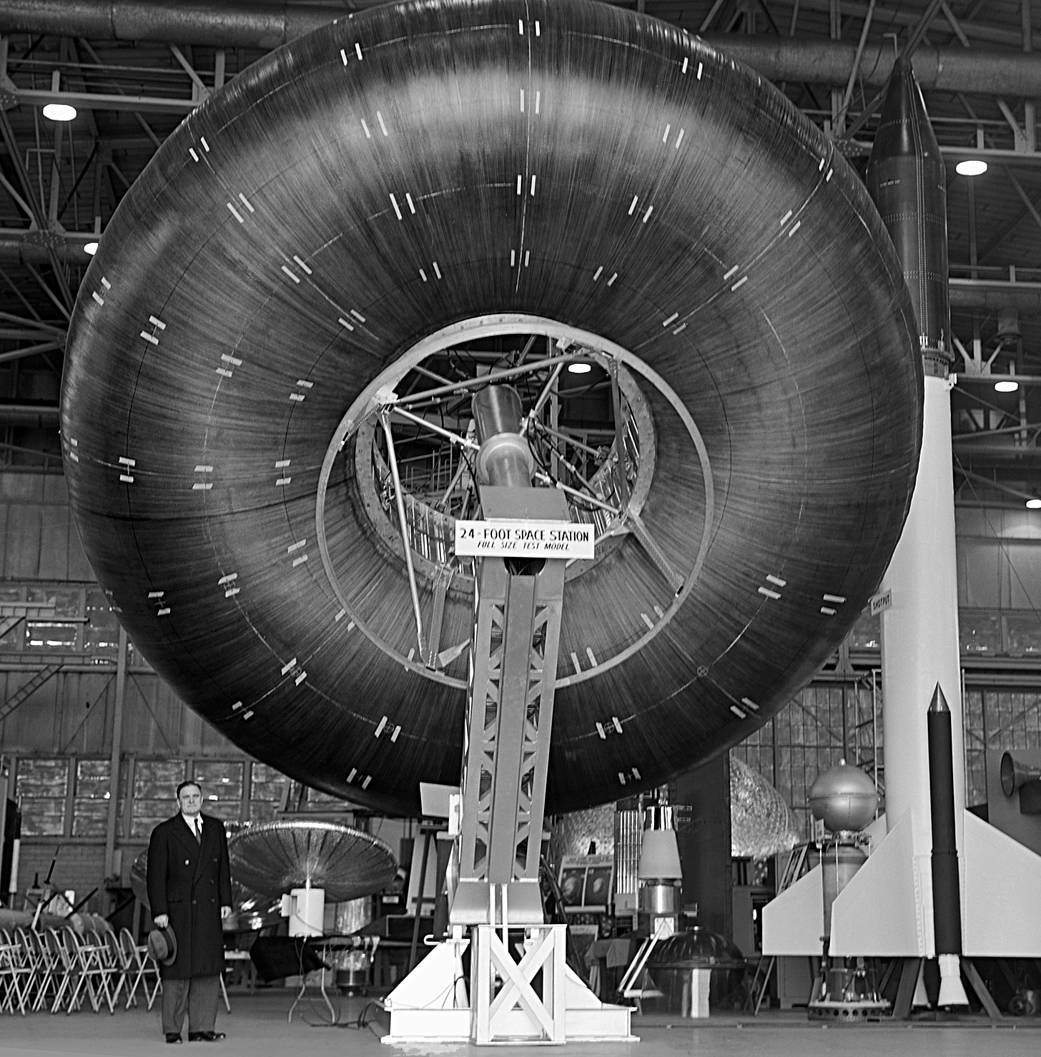November 20, 2013 marked the fifteenth anniversary of the launch of the first International Space Station (ISS) module. But decades before the Zarya module lifted off in 1998 NASA Langley researchers started work on the concept.
Research work for space stations has been a part of Langley’s portfolio from its early days as a NASA Center. Since then, Langley has looked at concepts and studied materials, structures and components to make the goal of living and working in space a success.
Langley’s earliest experiences with space stations are documented in Dr. James Hansen’s book Spaceflight Revolution. Before the goal to put men on the moon and before the United States had experience with human space flight, Langley leadership began thinking about the next step after Project Mercury to put an American in space. In the late 1950s and early 1960s, many thought that America’s next space project would be the establishment of a crewed space station. It was believed at the time, that space flights to other destinations would originate from this station.
Langley researchers worked with Goodyear Aircraft Corporation on a 24-foot diameter inflatable ring or torus. The concept was designed to fold into a launch container, would have 0 to 1G artificial gravity, have a rendezvous and docking capability, have variable demand power supply, and a regenerative life support system for a 6-person crew. Langley built several models of this configuration, including a full-sized version that was displayed for a December 1961 visit by then NASA Administrator James Webb.
Image Credit: NASA




























